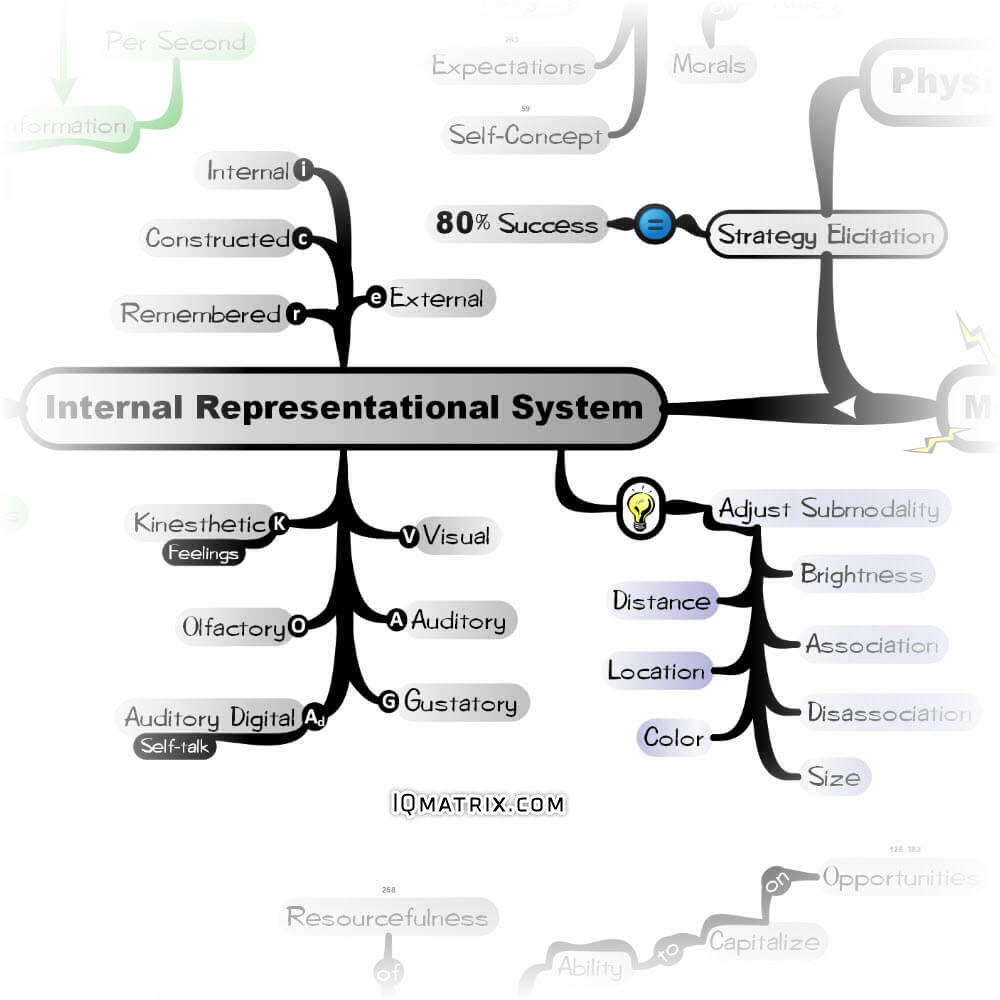A Representational System is an NLP model that outlines how we process information through our senses.
These systems include visual (what see), auditory (what hear), kinaesthetic (tactile sensations), auditory digital (self-talk), olfactory (smell), and gustatory (taste).
Each of these systems directly impacts and influences our state of mind (mental state). This, in turn, affects how we perceive and interpret the events and circumstances of our lives.
Associated with each Representational System are a set of submodalities. These submodalities affect how we process information through our five senses. Examples of submodalities include distance, brightness, size, location, color, association, and dissociation.
The model stipulates that when we make small incremental adjustments to the way we represent and perceive information (through our five senses) that this has a direct impact on the emotions we end up experiencing.
IQ Matrix Maps
Below you will find relevant IQ Matrix maps that are part of this segment of the MasterMind Matrix chart:
- No maps are currently available for this section.
Additional Resources
Learn more about this segment of the MasterMind Matrix by visiting the following links and resources:
- About Neural Linguistic Programming
- About Representational Systems
- All About Submodalities
- Derren Brown: NLP Swish Pattern Demo
- How to Use NLP to Change Submodalities
- Modalities and Representational Systems
- NLP Submodalities Explained
- NLP Swish Pattern Demo
- Submodality Examples
- Submodality Worksheet
- The NLP Swish Pattern
- The Submodality Model
Recommended Books
Here are several recommended books that will provide you with more insights and information about this specific segment of the MasterMind Matrix chart.
[intense_button color=”muted” link=”http://mastermindmatrix.com/knowledge-base/emotional-state/” title=”Next Section” icon=”forward”] Next Section: Emotional State [/intense_button]

